Lafayette, LA Pollen and Allergy Report for Summer 2023
Pollen Allergy Trends in Lafayette, LA
When is pollen lowest in Lafayette, LA?

February
Lowest month total PPM
Avg. PPM
When is pollen highest in Lafayette, LA?

April
Highest month total PPM
Avg. PPM
How does pollen in Lafayette, LA compare to Louisiana?
Lafayette has a lower average PPM than the state of Louisiana.
Lafayette yearly avg PPM:
Louisiana yearly avg PPM:
How does pollen in Lafayette, LA compare to the USA?
Lafayette has a lower average PPM than the USA.
Lafayette yearly avg PPM:
USA yearly avg PPM:
Is pollen worse this year in Lafayette, LA?
Spring 2023 was worse than spring 2022.
Spring 2023 PPM:
Spring 2022 PPM:
Average PPM in Lafayette, LA
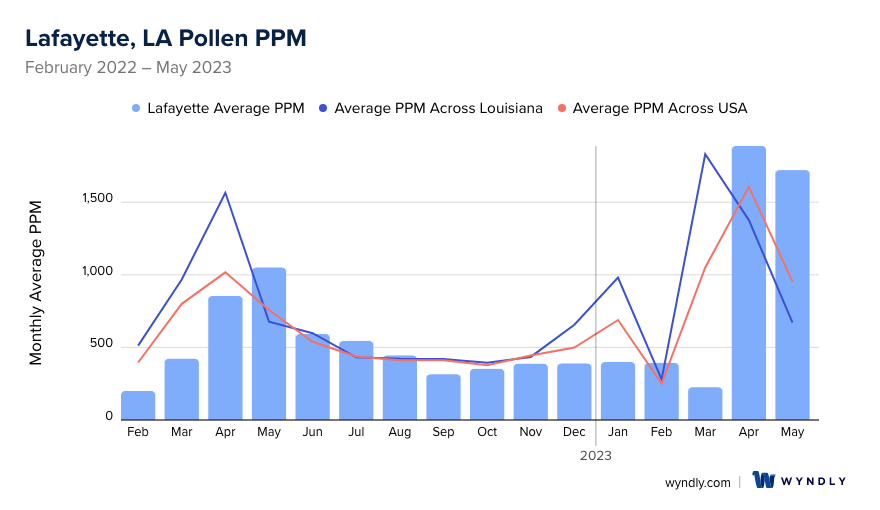
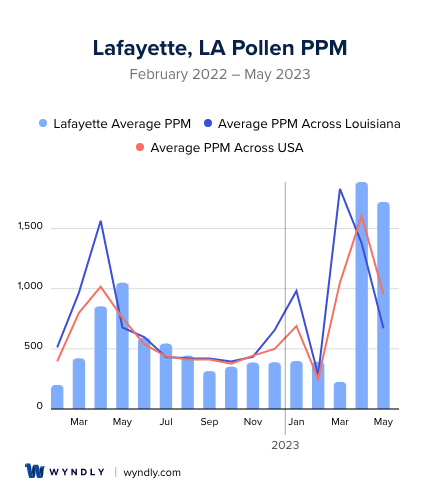
Lafayette, LA Pollen and Allergy Breakdown by Month
Grass
When is grass pollen highest in Lafayette, LA?
May has the highest grass pollen in Lafayette, LA with an average PPM of
When is grass pollen lowest in Lafayette, LA?
October has the lowest grass pollen in Lafayette, LA with an average PPM of
Tree
When is tree pollen highest in Lafayette, LA?
April has the highest tree pollen in Lafayette, LA with an average PPM of
When is tree pollen lowest in Lafayette, LA?
September has the lowest tree pollen in Lafayette, LA with an average PPM of
Weed
When is weed pollen highest in Lafayette, LA?
April has the highest weed pollen in Lafayette, LA with an average PPM of
When is weed pollen lowest in Lafayette, LA?
February has the lowest weed pollen in Lafayette, LA with an average PPM of
Lafayette, LA Pollen Monthly Breakdown by Pollen Type
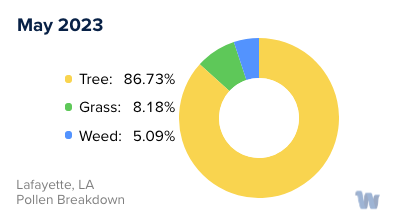
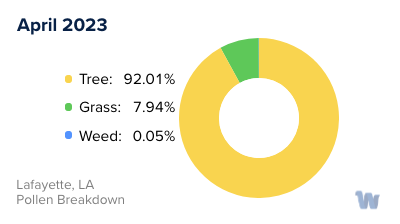
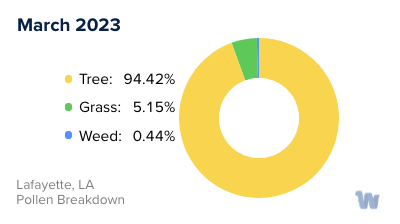
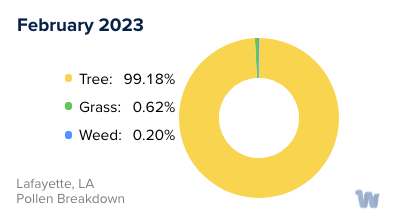
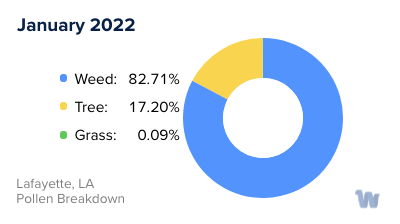
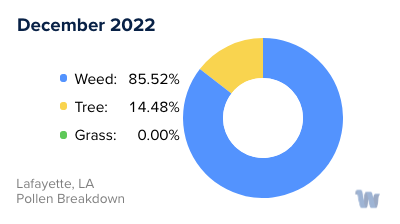

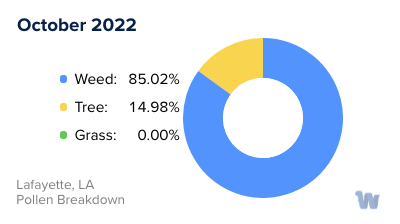
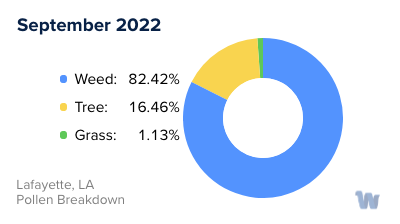
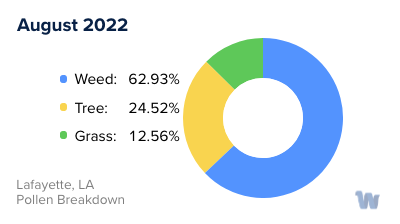

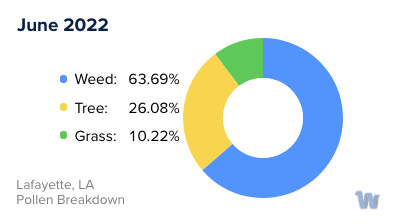
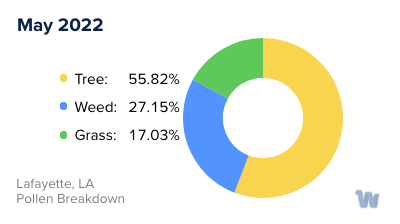
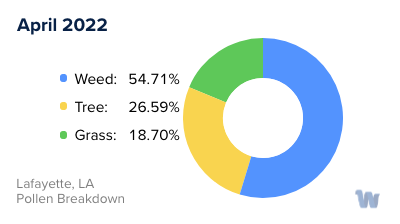
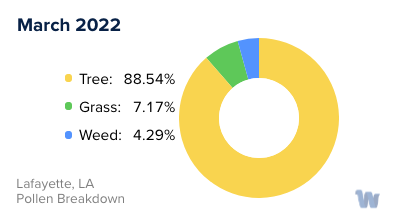
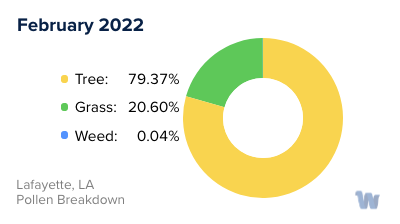
Pollen and Hay Fever in Lafayette, LA
Allergies are a common health concern, and Lafayette, Louisiana, is no exception, particularly when it comes to pollen allergies. A large portion of the residents here experience what's often referred to as hay fever, though its medical term is "allergic rhinitis." The primary culprits behind this issue are different types of pollen produced by various plants during specific seasons.
Lafayette is home to a diverse range of flora, and with that diversity comes a variety of pollen types. Among the most prevalent in this region are tree pollens, particularly from oak, pine, and cedar trees. These trees typically release their pollen in the spring, making it a challenging season for those sensitive to these types.
Grasses are another significant source of pollen. In Lafayette, common types of grasses like Bermuda grass, ryegrass, and Kentucky bluegrass release their pollen predominantly in the late spring and early summer. The warmth and humidity of this period enhance the dispersion of these pollens, contributing to a spike in hay fever symptoms among the population.
The fall season brings another wave of pollen allergies, this time due to weeds. Lafayette's warm climate is conducive to the growth of several weed species, including ragweed, pigweed, and sagebrush. These weeds typically release their pollen in the late summer and fall, contributing to the year-round pollen presence in the region.
The annual cycle of pollen release in Lafayette means that there is rarely a time when some type of pollen isn't present in the environment. Depending on the individual, sensitivity to different pollen types can vary, meaning that hay fever symptoms can occur at any time during the year.
Remember, while experiencing hay fever can be uncomfortable, it's your body's way of defending itself against what it perceives as foreign invaders. It's a testament to the complexity of our immune systems and a reminder of how our environment can directly impact our health.


